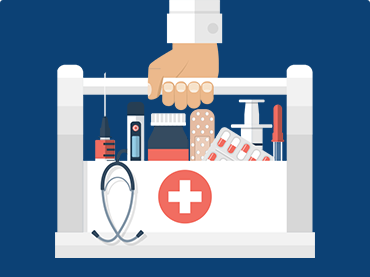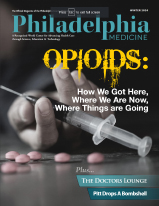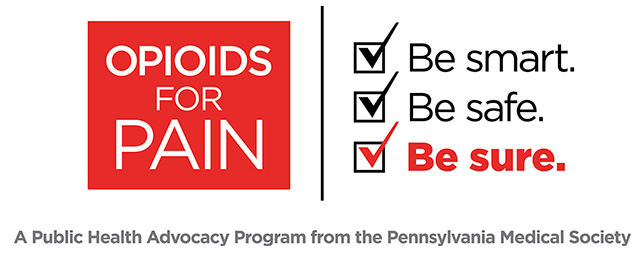1. Physicians discuss delivery reform at White House’s town-hall meeting
AMA physician leaders took part in a national discussion about opportunities and barriers for delivery system innovation during a June 6 meeting at the White House.
Speaking to the Obama administration’s interest in learning about delivery reforms that are working at the local level and identifying barriers to innovation, members of the AMA Innovators Committee talked about their work on specific payment and delivery innovations during the town-hall style meeting.
AMA leaders also discussed the organization’s commitment to delivery reform and raised issues that might prevent physicians from participating, including tight deadlines imposed by the Center for Medicare and Medicaid Innovation and the burdensome administrative requirements tied to the Medicare program.
Visit http://www.elabs10.com/ct.html?rtr=on&s=x8pbgr,129i6,2ke5,42yt,fpxx,fz6c,31o6 to read more in AMA Wire.
Visit http://www.elabs10.com/ct.html?rtr=on&s=x8pbgr,129i6,2ke5,8zw3,9004,fz6c,31o6 to access AMA resources to help physicians examine and implement innovations in their own practices, including a video on accountable care organizations and a “how-to” manual on new payment models.
2. Many doctors could face penalty in 2015 over Medicare quality reporting
Hundreds of thousands of physicians will see their Medicare payments reduced 1.5 percent in 2015 if early participation rates in the Medicare Physician Quality Reporting System (PQRS) are any indication.
The 2015 penalty will be assessed against physicians who do not fulfill the PQRS requirements next year. The Centers for Medicare & Medicaid Services (CMS) reports that 244,145 individual eligible professionals participated in the PQRS in 2010, only a fraction of the more than 1 million physicians and other professionals who were eligible to participate that year.
“CMS data show that many physicians are not yet participating in the PQRS program,” AMA President Peter W. Carmel told American Medical News. “A significant number of those who are trying have been unable to participate, showing that barriers to success still remain.”
Visit http://www.elabs10.com/ct.html?rtr=on&s=x8pbgr,129i6,2ke5,chj7,b6th,fz6c,31o6 to read more in AMA Wire.
**************************
FEDERATION NEWS
**************************
3. Physician-led CO-OP in Connecticut receives federal funding
A newly formed consumer operated and oriented plan (CO-OP) in the Constitution State has been approved to apply for licensure as an insurer and build a health benefit plan starting next year.
HealthyCT, sponsored by the Connecticut State Medical Society (CSMS) and the CSMS-IPA, has received nearly $76 million in federal loans to fund start-up expenses and meet reserve fund thresholds for state licensing. Designed to improve quality, coordination and continuity of care for Connecticut patients, the CO-OP is a non-profit entity that will use any surplus funds to stabilize premiums and enhance health care quality.
“The physicians and consumers who believe that there is a better way to provide health insurance coverage to Connecticut patients are thrilled that we have cleared this major hurdle,” HealthyCT Board President David S. Katz, MD, said in a news release. “This affirms our conviction that taking on this challenge is the right thing to do for the citizens of Connecticut.”
Visit http://www.elabs10.com/ct.html?rtr=on&s=x8pbgr,129i6,2ke5,d4zu,kfsf,fz6c,31o6 to read more in a CSMS news release.
4. Emergency physicians aim to address ER overcrowding
The American College of Emergency Physicians (ACEP) is collaborating on a public health initiative to research and disseminate best practices for improving patient flow in emergency departments.
In joining Urgent Matters, a national initiative of the Center for Health Care Quality at the George Washington University Medical Center School of Public Health and Health Services, ACEP will provide emergency physicians with the education and tools they need to prevent overcrowding and address behavioral health and workforce issues.
“Urgent Matters has a long, distinguished history of promoting strategies hospitals and health care professionals can use to reduce crowding and improve quality in emergency departments,” ACEP President David Seaberg, MD, said in a news release. “With ER visits continuing to rise every year while the number of emergency departments shrinks, the time is ripe for our organizations to team up to better serve our patients.”
Visit http://www.elabs10.com/ct.html?rtr=on&s=x8pbgr,129i6,2ke5,b4dj,et0i,fz6c,31o6 to read the ACEP news release.
**************************
PUBLIC HEALTH
**************************
5. Initiative educates patients about common medical tests
A new series of resources will help patients make educated decisions about tests and treatments for common health problems.
A collaboration between the American College of Physicians (ACP) and Consumer Reports, the series explains the benefits, harms and costs associated with common medical tests and treatments. Derived from the ACP’s evidence-based clinical practice recommendations published in Annals of Internal Medicine, the resources are intended to support high-quality care while reducing overall costs to the health care system. The first two resources cover diagnostic imaging for lower back pain and oral medications for type 2 diabetes.
“We are jointly committed to putting the brakes on over-testing and over-treatment,” John Santa, MD, director of the Consumer Reports Health Ratings Center, said in a news release. “[C]onsumers will benefit when either patients or doctors initiate conversations about these delicate issues.”
Visit http://www.elabs10.com/ct.html?rtr=on&s=x8pbgr,129i6,2ke5,c6pn,frn9,fz6c,31o6 to read more in an ACP news release.
6. CDC finds teen texting while driving, marijuana use on the rise
The latest edition of the Center for Disease Control and Prevention’s (CDC) national survey of high school students found a significant reduction in certain traditional risk behaviors but an increase in technology-related risks.
The 2011 Youth Risk Behavior Survey, conducted every two years since 1991, reported a significant decrease in the percentage of high school students who never wore a seat belt, rode with drivers who had been drinking or drove a car after drinking alcohol. At the same time, one-third of high school students reported that they had texted or emailed while driving a car in the past 30 days. Car accidents remain the No. 1 cause of death among teenagers, accounting for one in three deaths in that age group.
The survey also found other risky behaviors on the rise. One in six students said they were bullied electronically during the past 12 months, and 23 percent reported using marijuana, surpassing the number of teens who smoke cigarettes.
“Families, schools, communities and young people themselves must work together to help solve these problems, and interventions must be based on the best research available,” Howell Wechsler, director of the CDC’s Division of Adolescent and School Health, said during a press conference last week.
Visit http://www.elabs10.com/ct.html?rtr=on&s=x8pbgr,129i6,2ke5,9v0w,jvdz,fz6c,31o6 to view the survey.
**************************
ANNOUNCEMENTS
************************
7. AMA offers advice on shared savings programs
A new chapter in the AMA’s “Evaluating and negotiating emerging payment models” manual provides practical guidance for physicians who are thinking about participating in a shared savings program.
The chapter explains the methodologies behind shared savings programs and what physicians must know before they agree to participate. The chapter helps physicians evaluate their ability to succeed in such a program and identifies a number of existing shared savings programs in the public and private sectors.
Physicians who are interested in taking part in this risk-based payment arrangement will learn how to protect themselves from losses associated with unrealistic budget targets or high-risk patients, unfair termination and diminishing financial returns. The chapter also shows physicians how to identify ways to easily save money in their practices.
Visit http://www.elabs10.com/ct.html?rtr=on&s=x8pbgr,129i6,2ke5,8a2q,ieth,fz6c,31o6 to access the manual and a companion archived webinar.




